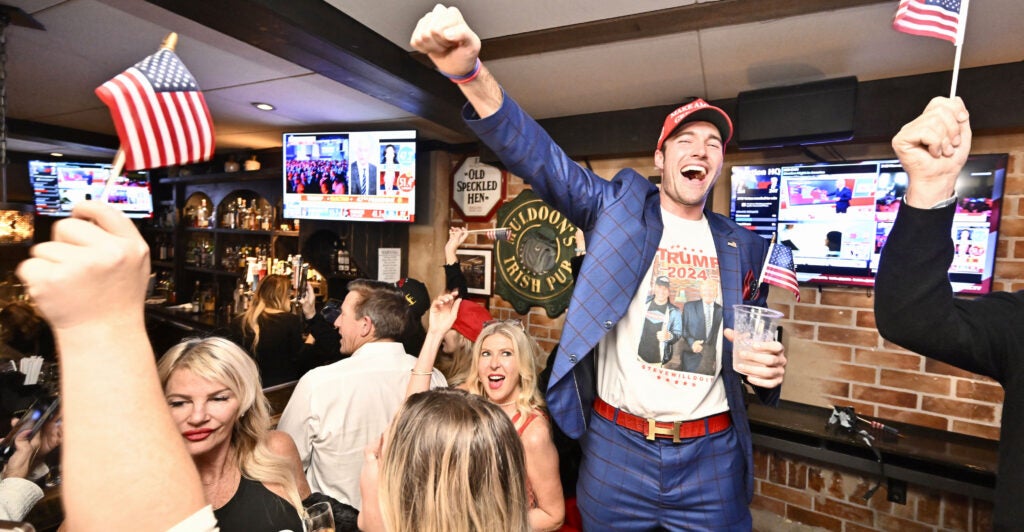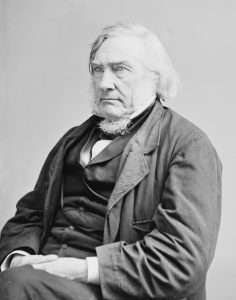
Three months ago I observed that “Donald Trump’s Get-Out-The-Vote Plan is Bonkers,” as it outsources the work to inexperienced outside political action committees, especially the far-right Turning Point network.
And last month I flagged stories from The New York Times and Washington Post reporting on concerns from Republican Party officials that the GOTV operation is a bust.
Now it’s September. And the panic from inside the GOP about the state of Trump’s ground game seems to be increasing.
But first, here’s what’s leading the Washington Monthly website:
***
The Continuing War on Easier Access to Voting: Joshua A. Douglas, University of Kentucky law professor, chronicles Republican efforts to prevent expanded access to voter registration ahead of Election Day. Click here for the full story.
How Harris Can Close the Gap in the Swing States: Contributing Writer Robert J. Shapiro urges the Democratic nominee to specify how much Trump would cut education and health care in the battlegrounds. Click here for the full story.
Personnel is Policy, Project 2025, and a Lesson for Democrats: Katie Kirchner, vice president of field-building programs at Roosevelt Forward, offers criteria for staffing the next Democratic administration. Click here for the full story.
***
This month, media coverage of Trump’s ground game efforts has intensified. And these dispatches consistently feature anonymous Republicans unhappy with what they are seeing.
Last week, Semafor reported:
Multiple party leaders, former RNC members, and lawmakers have privately trashed what they see as a lack of a clear operation, and expressed concerns about how it could affect not just the fate of the presidential race, but downballot races as well. Ronna McDaniel, who was ousted from her position as RNC chair back in February amid a Trump campaign takeover, has also grumbled to allies that the party’s on-the-ground efforts are lacking.
(As I explained in June, McDaniel was shivved at the urging of Turning Point’s Charlie Kirk precisely so Trump would shift GOTV responsibilities to groups like his.)
Based on observations from Republicans, Semafor depicts an operation infected by conspiracy theories of election fraud, at the expense of basic nuts-and-bolts campaign activity:
Behind the scenes, the concerns and criticisms are multifaceted. Some worry there’s a lack of a visible operation at this point in the race.
“I’m as plugged in as they get — and yet I don’t even know who my friends and family back home can contact for a yard sign or to knock doors in their precinct,” a Republican operative who votes in a swing state told Semafor.
Another Republican operative had questions about how outside groups are coordinating and whether data is being shared. And multiple people argued that the campaign has perhaps been over-focused on poll watchers as part of Trump’s false claim that the 2020 election was stolen, an effort driven by Trump and prioritized by Lara Trump and Michael Whatley, his allies heading up the RNC.
A third Republican strategist in a swing state said they’ve seen “no ground activity at all” and complained more typical volunteer work had been crowded out by “election integrity” efforts.
“They’re really only focused on recruiting folks to volunteer to be poll watchers,” the third Republican strategist said. “I mean, they do a lot of that shit. But what’s the point of watching the vote if you haven’t turned out the vote?”
The shift to using right-wing PACs for GOTV is in line with a shift in the type of voters being targeted. Turning Point convinced the Trump campaign that outreach should focus on getting “low-propensity” MAGAites to show up and vote, and not bother with contacting persuadable swing voters.
As The Guardian reported last week, the approach has raised “alarm” from Republican insiders. Democrats have more people on the ground overall, and the Trump’s base-only strategy prioritizes hard-to-reach rural voters over more densely populated suburbanites:
The result has been that the Trump campaign has put fewer resources into its ground game in battleground states, according to people familiar with the matter – and Republican officials have derisively said the Trump operation is more comparable in size to a midterm cycle than a presidential.
…
the Trump campaign appears to be dwarfed by the Harris operation, which is understood to have roughly 375 staffers in Pennsylvania alone, after Democrats spent years building up its voter turnout efforts in the state that could decide the election.
The Trump campaign … dismissed criticism about its presence, arguing it ultimately does not matter so long as their “Trump Force 47 captains” and the Pacs together knock on enough doors of low-propensity Trump voters, especially in rural areas.
That last contention, at least, is true: the RNC used to focus on suburban areas where they could hit more doors in a single day than in rural areas, which they instead just targeted with a blitz of mail ads.
But the Pacs, which are supposed to [be] bridging the gap, have been slow to spool up, according to people with direct access to the data for groups like America Pac, Turnout for America, Turning Point Action and America First Works.
They have only started to hire at a rapid clip in recent weeks, the people said, meaning they are reaching Trump supporters late in the cycle when it often takes repeated “voter contacts” to get them to return a ballot.
The situation means that not only is the size of the formal Trump operation particularly small for the 2024 election, but the door-knockers and canvassers recruited by the Pacs might be less effective compared to previous presidential cycles.
Reuters raised the possibility the PACs could get in each other’s way:
Not everyone involved in Trump’s get-out-the-vote efforts thinks the intense focus on infrequent voters is a good idea.
One party official in a battleground state, briefed on the ground game strategy, said they were concerned that too many resources were being focused on voters who don’t vote often at the expense of swing voters, who don’t have a particular allegiance to one party and are easier to get to the polls.
The official, who asked to remain anonymous to discuss internal plans, said that infrequent voters require large investments of time to get them to the polls, including multiple visits to their homes and phone calls. They may not feel invested politically and may not tune into TV ads.
Donald Green, a political science professor at Columbia University, said Trump’s strategy is supported by academic research showing that efforts to mobilize infrequent supporters can be relatively effective in presidential years, when those voters are more open to being coaxed. But he also sees risks in the approach.
“The question is whether they’re doing their work efficiently. If they’re going to the same places and contacting the same people, that’s a waste of resources,” he said.
Two days ago, NBC News picked up more complaints that the outside groups simply aren’t doing enough work:
…as more than a half-dozen Republicans, many with experience in field operations and GOTV efforts, said, there is fear the Trump team doesn’t have enough action going on on the ground, particularly as Vice President Kamala Harris’ campaign dwarfs their operation in terms of battleground field offices and staff and as Democrats can count on unions and other issue groups to boost their on-the-ground efforts. They also expressed worries that the outside groups, which have been tasked with so much of the voter engagement portfolio, aren’t doing as much as initially hoped for.
…
“There is no tangible evidence that Trump and the RNC have invested in the kind of ground game that you need in a turnout election,” a Republican operative in a swing state said. “Local Republicans aren’t being asked to knock doors, make phone calls, text voters or even harvest mail-in ballots. Instead, they’re being asked to be poll watchers in Republican counties or localities with Republican clerks.”
Finally, the Washington Post this week focused on the GOTV efforts from Elon Musk’s America PAC, which appears to be eclipsing Turning Point as the biggest player in the network of Trump-allied groups.
Musk is belatedly pouring money into the operation. But is he spending efficiently?
Whether the committee is targeting the North Carolina voters that Trump needs to carry the state is less clear. The mailers and door-hangers obtained by The Post were delivered to a longtime conservative operative in the state who was already committed to Trump and votes regularly in federal elections.
“It’s a little screwy that I’m on their list,” said the individual, speaking on the condition of anonymity to discuss campaign tactics candidly. “Stupid to waste money on someone who is a guaranteed Trump vote.”
FIND THE MONTHLY ON SOCIAL
We’re on Twitter @monthly
We’re on Threads @WAMonthly
We’re on Instagram @WAMonthly
We’re on Facebook @WashingtonMonthly
Best,
Bill Scher, Washington Monthly politics editor
The post Republicans Are Worried About Trump’s Turnout Operation appeared first on Washington Monthly.


 3 months ago
10
3 months ago
10 









 Bengali (Bangladesh) ·
Bengali (Bangladesh) ·  English (United States) ·
English (United States) ·